Measurable Targets for Progress
- by Kelvin Miyahira, October 2015
The golf swing is difficult to learn when you have fuzzy, ambiguous goals in mind. So to help you with your progress, I’ve got some simple checkpoint positions and angles to look for when you look at your own videos. Do understand that these images and your videos have potential for 2D distortion in some or all of these....... BUT if you understand anatomical movement and use similar camera views it is much easier to understand.
Basically for example.... If you look like DJ in your video in the positions below, it’s got to be good. So follow proper guidelines for shooting and intepreting your videos, you’ll have a good idea of how well you’re doing. Read below.
Backswing
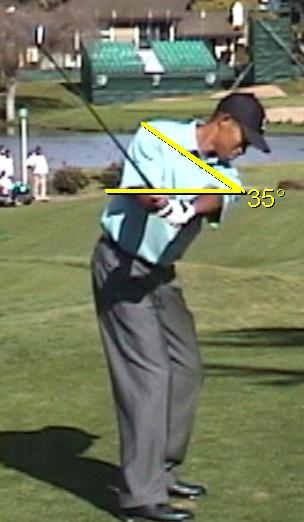 |
 |
 |
Shoulder tilt on the backswing is key to developing the correct left lateral bend. If one is too level, it will develop a right lateral bend on the backswing. If it is too steep, there is a good chance that shoulder tilt is combined with a left pelvic tilt and that’s how it gets to be so steep.
Pelvis should look relatively level at the top of the backswing. You also want to be sure that your pelvis isn’t dropping via excessive knee bending or at the hip because it is possible to lower the pelvis evenly on both sides and still be level.
In general, the spine should lean about 15 degrees away from the target. More than that creates too much spine flexion and lower body may shift to load the left side in order to retain balance. Too little or spine vertical or even more suggest spine is too extended as in S & T.
Pelvic Tilt in Transition
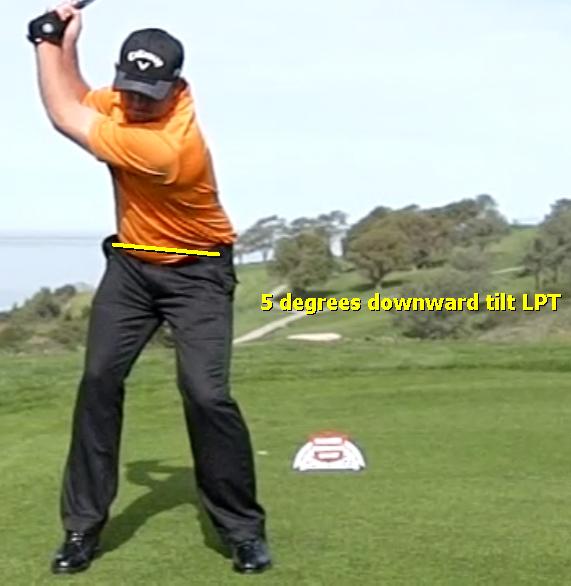 |
In transition it is proper to tilt the left hip down (LPT)
 |
And of course anterior pelvic tilt (belt buckle points more toward the ground).
Halfway down
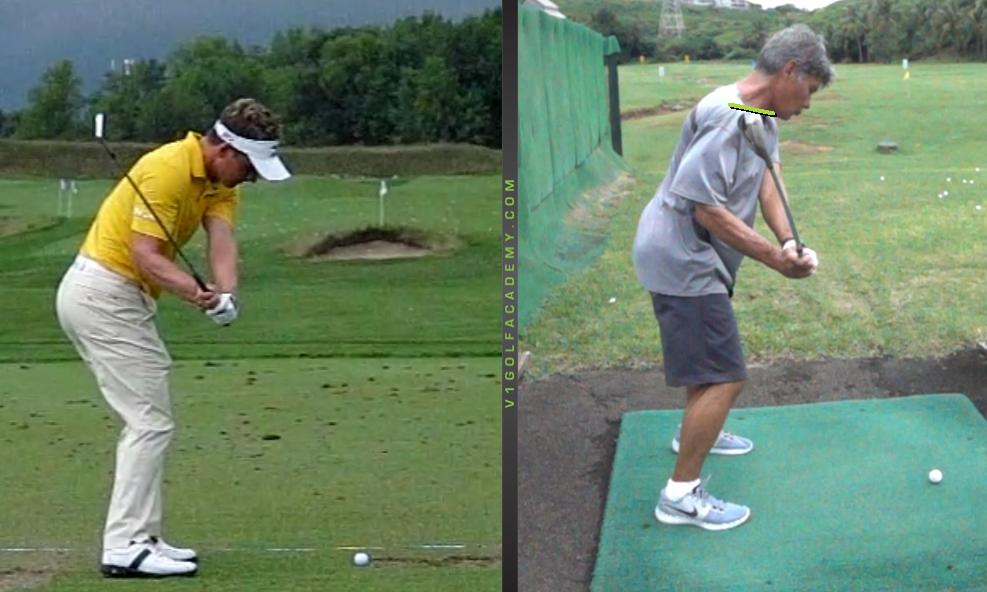 |
At this point the left shoulder should be elevated and the right shoulder depressed. Thus right shoulder should appear level or slightly lower than left. This is right lateral bend. If right shoulder is higher, it suggests more of a left lateral bend and the typical steep downswing.
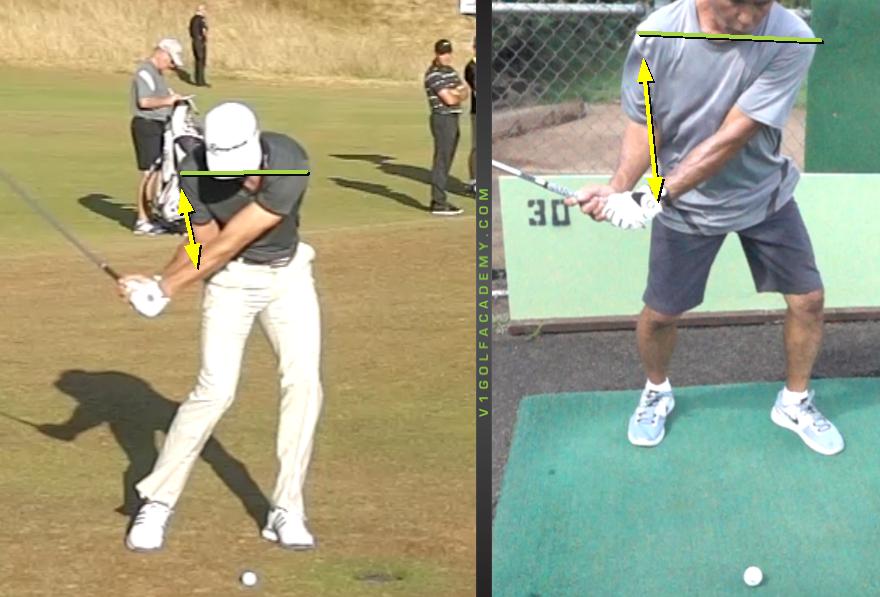 |
From front view one can clearly see the right shoulder is much closer to his right hip than my amateur student.
Impact
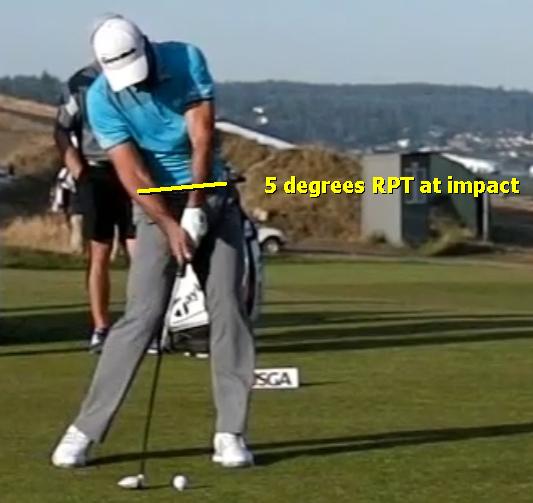 |
By impact the right hip and knee extending plus the left leg extending (though NOT vertical) remove the LPT until it is about 5 degrees into right pelvic tilt. It should be noted that if the right hip and knee stays flexed, the RPT can as much as 30 degrees.
Right Lateral Bend (RLB)
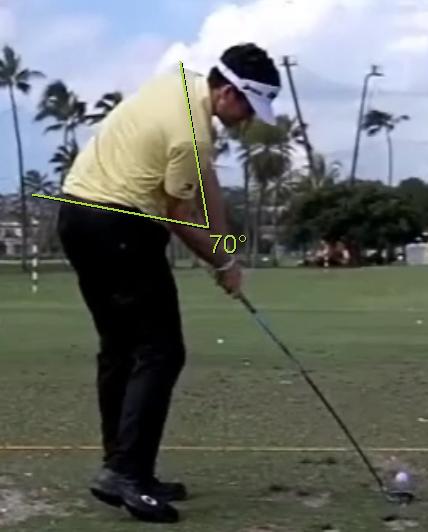 |
 |
This is really a measure of pelvis vs shoulder tilt. The more level the pelvis and rotated along with a more tilted (ferris wheel) shoulder turn/tilt, the greater the connection in spine gears. Therefore the more safely you will be using your spine and be able to generate greater power.
 |
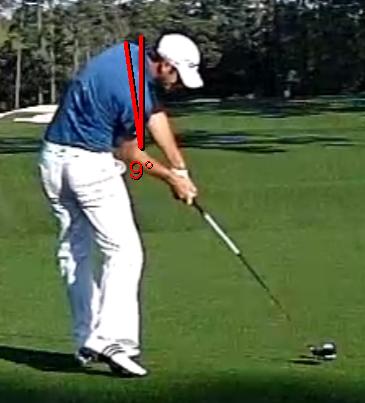 |
Separately, the right hip tilt from target line view look like it is tilted 11 degrees down while shoulders are open by about 9 degrees on DJ.
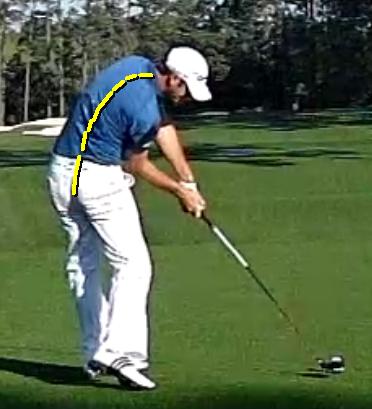 |
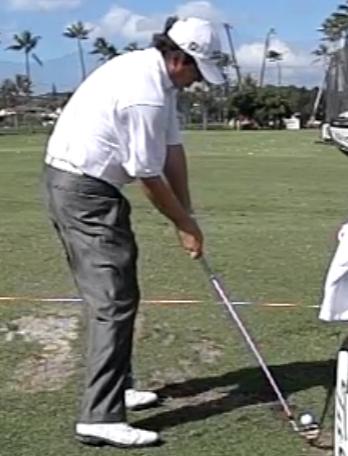 |
Don’t forget that we’re also looking for bend in spine along with the right elbow in front of the right hip.
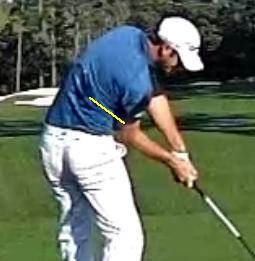 |
Also, we want a slight arch in the right side of lower back. It is sign of retaining lordosis compared to Dufner.
Left Hip to Left Ankle Angle
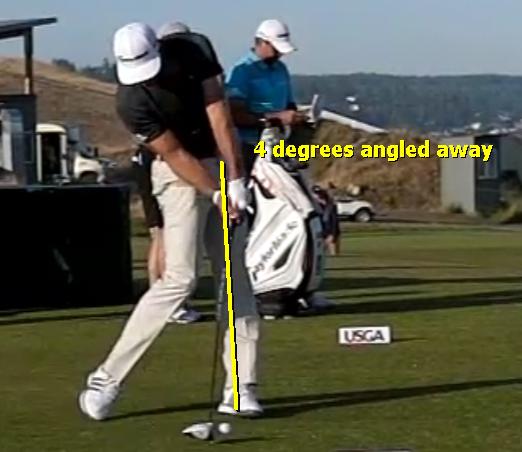 |
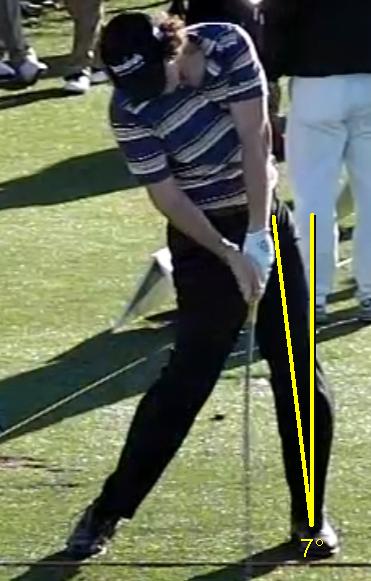 |
Typically I use the left femoral head to the left ankle to determine whether one has slid too far or not. The driver swing requires the left hip to be a little farther back than for the irons. See below.
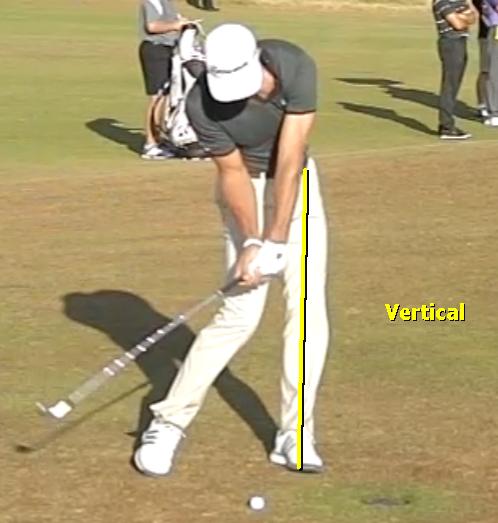 |
Left Hip A Little Further For Irons
Shoulder Tilt Angle At Impact
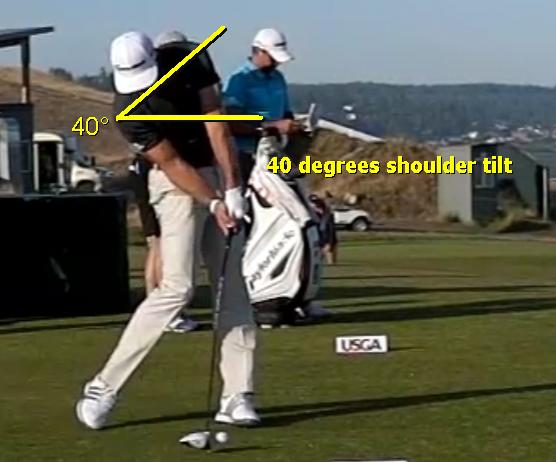 |
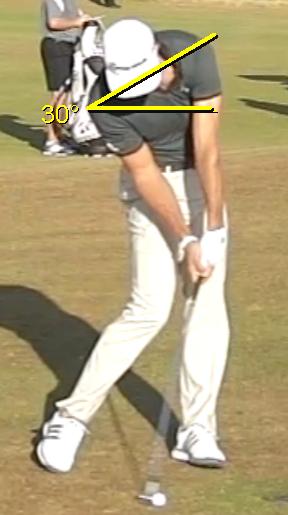 |
You can see the difference in tilt of shoulders from front view in driver vs iron.
Left Leg Tilt Angle Just Before Impact
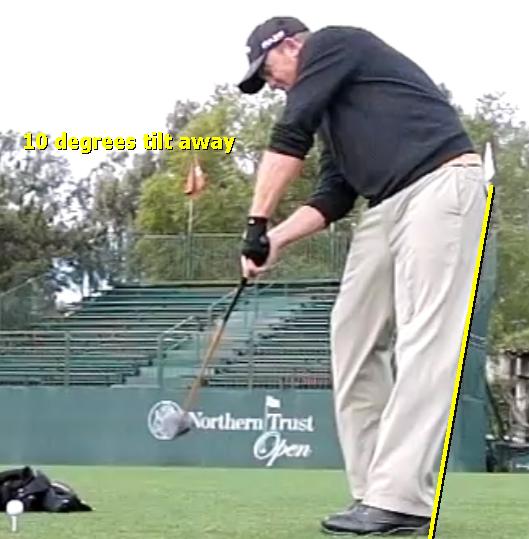 |
The left leg should extend at a diagonal angle instead of being straight up vertical. So a 10 degree angle tilted away from the ball should keep pelvis rotating and restricting RPT versus triggering a jump/stall or slide/stall with RPT.
Bottom of the swing arc
Some people believe the bottom of your swing arc will always be under your left shoulder. It can be.
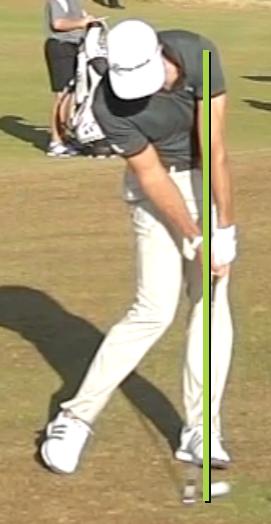 |
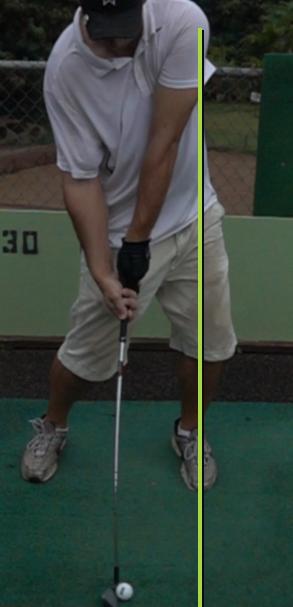 |
This is true only for the players that hold lag and can hit the ball without a flip. But if you release too early and get right wrist in flexion at impact, isn’t that going to affect low point?
Left Forearm To Clubshaft Angle At Impact
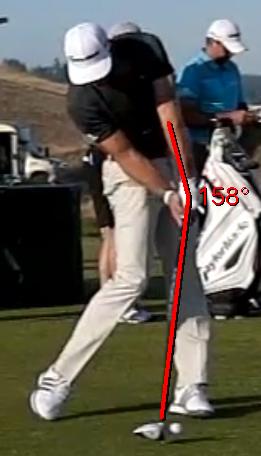 |
So ultimately, retaining your lag longer and releasing it late is going to be helpful in hitting clean iron shots from the ground and even hit your driver better. One can see that Dustin has the shaft 22 degrees behind his left forearm. May not be attainable for everyone out there but that’s a great goal to have.
Hopefully these measurable targets will help everyone diagnose their own swings and make measurable improvements in order to build a better swing!
Aim for the stars and atleast touch the sky!!

